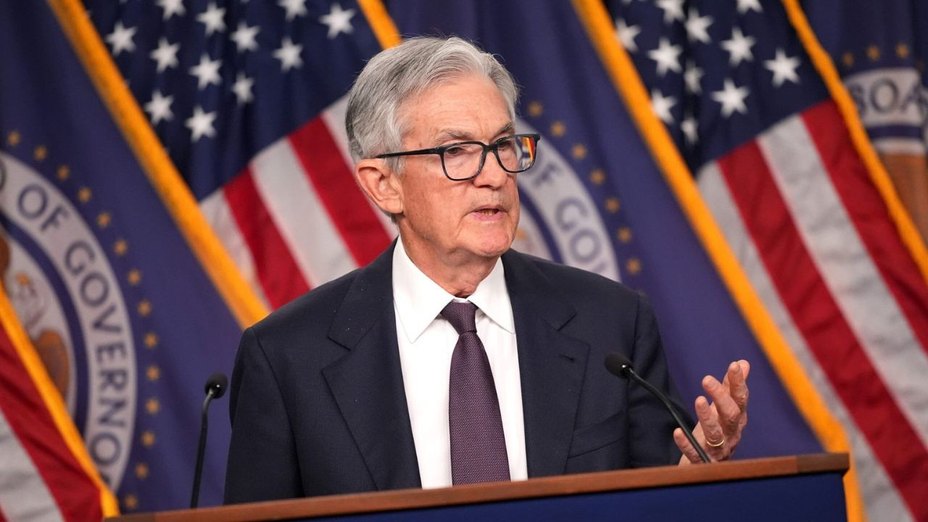Powell Hints at Rate Cut, Sending Markets Soaring Amidst Trump Pressure
Following months of public demands from President Donald Trump, Federal Reserve Chair Jerome Powell delivered a highly anticipated speech at Jackson Hole.
NEWS
Muhammad Umaish
8/22/20253 min read


On a high-stakes Friday in Wyoming, Jerome Powell gave a widely watched speech at the Jackson Hole symposium, following months of resisting intense pressure from President Donald Trump to lower rates and step down. In his address, which was closely scrutinized by investors and policymakers alike, Powell offered a clear signal that the central bank was prepared to act, a move that sent markets soaring. His remarks, however, also highlighted a gloomier economic outlook, shaped in part by the very policies that the president has championed.
A Battle for the Fed's Independence
The stage for Powell's speech was set by months of unprecedented conflict between the White House and the Federal Reserve. For decades, the central bank’s independence from political pressure has been a cornerstone of its authority. However, President Trump has openly challenged that tradition, publicly demanding rate cuts and launching a series of personal attacks on Powell, whom he has referred to as a "numbskull." This political pressure is unprecedented in modern history, and it has put Powell in a difficult position, forced to defend the Fed’s autonomy while also navigating a complex economic landscape.
The president's actions to influence the Fed have not been limited to online remarks. In July, he made a rare presidential visit to the central bank’s headquarters and publicly called for the resignation of Fed Governor Lisa Cook after an ally alleged she had committed mortgage fraud. Her firm refusal to be "bullied" into resigning highlighted the growing political pressure on the central bank. Powell's term is due to expire next May, and the White House has already begun interviewing potential replacements, adding another layer of political pressure as he approaches the end of his term. The fact that two governors—Christopher Waller and Michelle Bowman—who recently voted against the majority on a rate decision, are believed to be on the short list of candidates further illustrates the political dynamics at play.
The Economic Backdrop
Before his Jackson Hole address, the Fed had left interest rates unchanged for five consecutive meetings. This stubborn hold on rates was driven by a desire for more clarity on the economic effects of the president’s policies, including a series of sweeping tariffs on imports. The Fed’s last meeting in July, where rates were held steady, saw a rare moment of dissent. The dissent of two governors, the first such split in decades, highlighted the increasing friction within the central bank.
The economic data leading up to the speech were also mixed and complex. Official employment data showed that job growth had stalled over the summer, prompting President Trump to fire the federal official in charge of labor statistics. This difficult combination—with inflation still on an upward trend—made the central bank's job more complicated. Investors and economists were desperate for a sign from Powell as to whether the Fed would cut rates to stimulate the slowing economy or hold steady to combat rising prices. This made his Jackson Hole speech one of the most closely watched events of the year.
Powell’s Message and Its Market Impact
In his address, Powell delivered a message that was both a relief to markets and a stark assessment of the economic outlook. He hinted strongly that a rate cut was on the horizon, potentially as soon as September, which would be the first cut in nine months. Traders immediately began adjusting their expectations, with the chance of a September rate cut jumping from 73.5% before the speech to 87% afterward.
Citing "downside risks to employment," Powell explained that the Fed was considering a policy change because those risks could quickly materialize, causing a rapid increase in layoffs and unemployment. His words signaled that the Fed was shifting its focus from fighting inflation to supporting the labor market, which was showing signs of weakness.
Crucially, Powell also directly addressed the impact of tariffs, which have been a major point of contention between the Fed and the White House. He stated that "Higher tariffs have begun to push up prices in some categories of goods," and that the effects were now "clearly visible." This acknowledgment demonstrated that the Fed was basing its policy on objective economic data, not political demands, and that Trump's trade policies were ironically contributing to the very economic conditions that might warrant a rate cut.
The financial markets reacted with immediate and dramatic enthusiasm. The Dow Jones Industrial Average surged, rising 680 points, and was on track to close at its first record high in months. This rally was a direct result of the potential for lower borrowing costs, which stimulate business activity, boost spending, and provide a powerful tailwind for stock prices. The bond market also rallied, with Treasury yields falling sharply as investors rushed to lock in current rates before a potential cut, as bond prices and yields move in opposite directions.
Jerome Powell's Jackson Hole speech was a masterful display of navigating a complex political and economic environment. He managed to signal a potential rate cut that cheered markets without giving in to the political pressure from the White House. While his message offered a sense of certainty about the Fed's next move, the long-term outlook for the U.S. economy and the future of the Fed's leadership remains to be seen.
